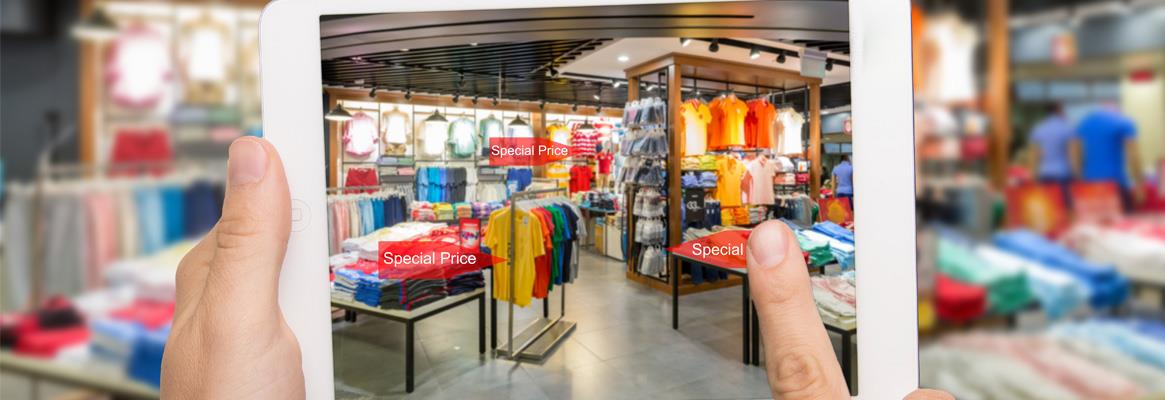The future of fashion retail can be encapsulated in five themes that are driving disruptive change.
Technology is transforming fashion, with consumers radically changing their behaviour when it comes to engaging, browsing and buying. Success for fashion retailers now isn't just about moving online, but about embracing the latest digital technologies around AI (artificial intelligence), mobile, social, omni-channel and sustainability.
How can they achieve this and pick the right tech to focus on? Recent research into the Future of Fashion Retail highlights five key trends that savvy fashion retailers are benefiting from.
1. Delivering an AI-powered fashion experience
AI is transforming the retail landscape-and fashion retailers are at the forefront of its use, with 75 per cent planning to invest in AI in 2019. One of the most promising ways of deploying AI is to power visual search. Gartner predicts that this will increase digital commerce revenues by 30 per cent by 2021 for those sites that adopt it.
Some fashion brands are already ahead of the curve when it comes to visual search. Both ASOS and H&M let shoppers upload photos to their sites and find similar items, demonstrating that the technology is moving towards the mainstream.
2. Benefiting from the mobile tipping point
In the past, mobile drove greater traffic to fashion ecommerce websites, but still generated lower revenues than the desktop. This has now changed-we've reached a tipping point which sees online fashion ecommerce becoming mobile-first. Nosto's own global research shows that the desktop now lags not only on traffic, but also the number and value of orders. Between Q1 and Q4 2018 mobile moved from 37 per cent to 46 per cent of fashion ecommerce revenues, with desktop declining from 50 per cent to 44 per cent.
This change also brings a downside-the same study showed that average visit time on mobile was 32 per cent less than desktop, at just 163 seconds. That means making an impression and rapidly delivering what consumers are looking for will be vital to success in the mobile-first world.
3. Making social influence virtual
Every fashion retailer understands the importance of embracing social influencers, with 57 per cent of them investing in marketing to this group to increase brand awareness.
However, the next step in influencer marketing could transform the landscape. We're now seeing virtual creators, digitally-generated online personalities, becoming more common. They generate the same social impact as humans-but only live in the virtual world. A great example is Lil Miquela, who has more than 1.6 million Instagram followers and has collaborated with Barney's, Supreme and Prada, and is completely computer-generated.
Given this success, finding ways to tap into the power of virtual influencers promises to be key for fashion brands moving forward.
4. Shifting to data-driven omni-channel
The first quarter of 2019 saw 5,994 physical stores close in the US-a huge increase on 2018, when 5,584 shut over the course of the entire year. However, this stark statistic doesn't tell the whole story. About 73 per cent of consumers use more than a single channel when buying, and more and more online fashion brands and direct-to-consumer retailers are opening physical stores. For example, Nike launched the first Nike Live concept store in 2018-while it is a physical shop, it is built entirely on online data and is driven by digital.
Data unification provides the backbone for mastering this omni-channel convergence, ensuring that consumers receive an experience and products tailored to their needs. Yet 65 per cent of retailers are unhappy with their current data unification efforts, showing a need for transformative improvements to embrace omni-channel personalisation.
5. Meeting the need for greater sustainability
Recent research by Nosto found that over half (52 per cent) of shoppers want fashion brands to be more sustainable-and this picture is consistent across all age groups. However, consumers feel confused about how fashion brands are responding, with under a quarter (23 per cent) saying they have a good idea of what brands mean when they say they are committed to sustainability.
Consumers are clear in their expectations around sustainability. They want brands to do five things. They want them to reduce the amount of packaging they use, provide fair pay and good working conditions, use renewable/recyclable materials, make clothes that are designed to last longer and use fewer resources (water, power, materials) when manufacturing garments. With sustainability a key focus for fashion retailers, those brands that can demonstrate their commitment are likely to benefit in terms of consumer loyalty, reputation and revenues.
The future of fashion is both exciting and challenging for retailers. However, by embracing these five trends they can differentiate themselves and drive greater success, across all channels.









Comments